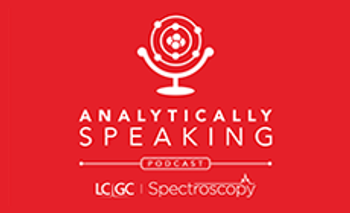
Breakthrough in Terahertz Spectroscopy: A Compact, High-Speed Pyroelectric Receiver
A recent study examined a new pyroelectric receiver that has advanced terahertz (THz) spectroscopy.
By overcoming the limitations present in terahertz (THz) spectroscopy, a newly introduced pyroelectric receiver is a sign of more compact and user-friendly spectroscopic systems to follow, according to a recent study published in Applied Science (1).
THz radiation has been expanding exponentially in both scientific research and commercial technology applications (2). The ability to penetrate various materials without the damaging effects of ionizing radiation makes THz radiation particularly valuable in fields such as astronomy, atmospheric research, neuroscience, and plasma diagnostics (1,2). Despite its potential, the development of compact and practical THz spectroscopy systems has been hampered by the lack of easy-to-use and miniaturized detectors (1).
This study, led by Jean-Pierre H. van Helden from the Leibniz Institute for Plasma Science and Technology (INP), introduced a high-speed pyroelectric receiver that promises to overcome longstanding limitations in the field of THz spectroscopy, paving the way for more compact and user-friendly spectroscopy systems (1).
This cryogen-free detector is designed for THz absorption spectroscopy. As a result, it can offer high-speed performance without the need for cumbersome cooling systems (1). In the study, van Helden and his team shows the device’s capabilities through detailed absorption spectroscopy measurements conducted on a reference gas cell (RGC) containing ammonia (NH3), using a tunable THz quantum cascade laser (QCL) at approximately 4.75 THz as the light source (1).
The team analyzed a single absorption feature of NH3 recorded at a tuning frequency of 201 Hz. The pressure inside the reference gas cell was determined accurately, which aligned with the results using frequency-comb-based Fourier-transform infrared spectroscopy (1).
The research team showed how the new receiver can record spectra at frequencies up to 281 Hz without introducing any artifacts into the observed spectral absorption profile (1). This performance matches the accuracy and reliability of traditional helium-cooled bolometers, which are typically more expensive and require complex cryogenic cooling systems (1). The pyroelectric receiver’s simplicity, high sensitivity, and room-temperature operation are significant advantages, making it a promising alternative for various THz spectroscopy applications (1).
High tuning frequencies were also explored. Van Helden’s team concluded that the receiver would need a faster optical chopper to minimize the deformation of the absorption features at these frequency levels (1).
Read More:
By enabling high-resolution, cryogen-free THz spectroscopy, the new receiver opens the door to a variety of practical applications beyond just the laboratory environment (1). For example, industries such as pharmaceuticals, security, and environmental monitoring could benefit from compact, efficient, and cost-effective THz spectroscopy systems.
As the study demonstrated, this new pyroelectric receiver represents a new shift in THz spectroscopy and technology. As shown in the study, Jean-Pierre H. van Helden and his colleagues at the Leibniz Institute for Plasma Science and Technology have provided a solution that addresses both the technical and practical challenges that have hindered the broader adoption of THz spectroscopy (1).
As the technology continues to evolve, further improvements and innovations in THz technology are expected that will expand the capabilities and applications of THz radiation.
References
(1) Wubs, J. R.; Macherius, U.; Lu, X.; Schrottke, L.; et al. Performance of a High-Speed Pyroelectric Receiver as Cryogen-Free Detector for Terahertz Absorption Spectroscopy Measurements. Appl. Sci. 2024, 14 (10), 3967. DOI:
(2) Zhang, J.; Li, S.; Le, W. Advances of Terahertz Technology in Neuroscience: Current Status and a Future Perspective. iScience 2021, 24 (12), 103548. DOI:
Newsletter
Get essential updates on the latest spectroscopy technologies, regulatory standards, and best practices—subscribe today to Spectroscopy.




